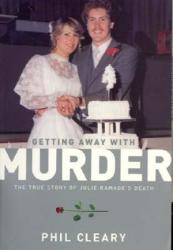
The true story of a high profile suburban Melbourne murder - one of the last to allow the defence of provocation. James Ramage was a prosperous man. And like all prosperous men James Ramage owned things - a nice house in middle class Balwyn, a successful business, a healthy bank account, two teenagers at elite private schools, and a beautiful wife. To anyone looking on, it seemed that James Ramage had it all. Then one day his lovely wife left him. Forever.
Six weeks later, in a fit of rage he choked his wife to death on the floor of the kitchen where Julie had spent years looking after her family. He put her body in the boot and buried her in a shallow bush grave. He made two fake calls to her mobile phone to cover his tracks, and then drove home, stopping off to choose the marble benchtop for his new kitchen. Several hours later he visited a lawyer friend, got his story straight and turned himself in to be charged with his wife's murder. At his trial, Ramage told the court he couldn't bear the thought of her leaving. He said that on the day he killed her, Julie had said she found the thought of sex with him repulsive'. Later, there were howls of protest and shock when a Victorian court found that Julie Ramage had contributed to her own death by provoking her husband to murder.
In Getting Away with Murder, Phil Cleary, tells the victim's side of the story. Phil has been a vocal critic of the defence of provocation since he was devastated by the murder of his own sister, after which her killer walked free having served only three years in gaol. The Ramage case is arguably the one that forced the law of provocation to be reviewed.